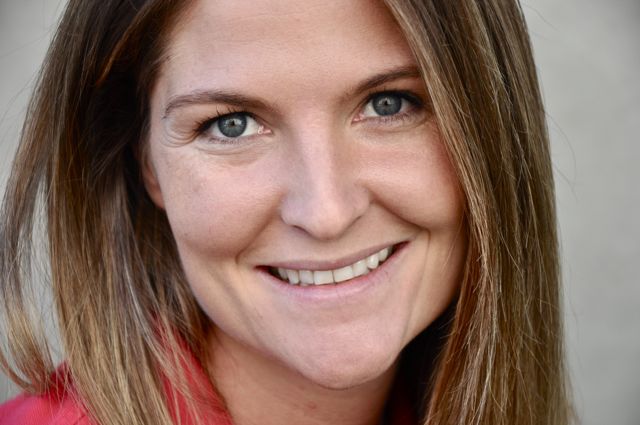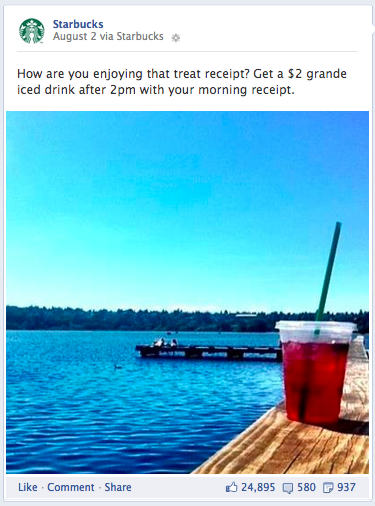Archive for the ‘social media’ Category

AJGpr client, Dr. Norman Marcus, author of End Back Pain Forever: A Groundbreaking Approach to Eliminate Your Suffering and founder of The Norman Marcus Pain Institute, recently posted a blog about the growing problem of prescription drug addiction and misuse and what government is doing about it. Here it is.
49 States Adopt Prescription Drug Database to Prevent Prescription Drug Abuse by Dr. Norman Marcus
Because of the growing problem of addiction, misuse, and diversion, 49 states have now adopted a state prescription drug database. You may have read an article recently in The New York Times about Missouri being the only state that has not adopted such a database. In New York, as a prescriber of controlled substances, each time a patient is prescribed any type of controlled substance, I must log into the NYS website to confirm that a patient is not receiving other medications from other doctors.
I found a few patients who had not been honest with me and had received medications from other doctors. Unfortunately, the small occurrence of dishonest behavior has obliged all doctors to be alert for the possible misuse of medication. At the Norman Marcus Pain Institute, I implement several rules for patients receiving any type of controlled substance from me. Here are a few of them:
• Only one physician can prescribe all pain medications.
• Only one pharmacy should be used to obtain all pain related medications.
• All medications, including herbal remedies and over the counter medications, need to be reported since all medications can interact with one another.
• Medications must be kept in a safe and secure place, such as a locked cabinet or safe.
Following these simple rules will help protect my patients and their families from improper use of pain medication.

AJGpr client, educational consultant Angelina Arrington, Founder of Academic Savvy, has just posted her second blog installation in her Summer Savvy Series to kids learning and having fun during the summer break when statistics shows that math and reading levels drop during these months. Here is Part 2.
Summer Savvy Part 2: Your Kitchen: The perfect spot for family fun and summer learning!
When I was growing up, our summers meant lazy days spent playing softball at the park, swimming at the local public pool, helping my school teacher mother prepare her classroom for the fall, following my grandmother around the kitchen, and running around outside with other kids from the block until the street lights came on. July and August were filled with all sorts of adventures, and my friends and I returned to school in September with plenty of stories to tell. Cooking and experimenting with food was one of my favorite activities. I’ve been fiddling around the kitchen since I was about seven. One of my early specialties was cinnamon toast, and I eventually graduated to lemon cakes and peach cobblers under the tutelage of my grandmother. Those summer days acting as her sous chef are still some of my fondest memories.
Summer is the perfect time to get in the kitchen and whip something up with your kids! It can be challenging for families to find the energy to cook together during the school year. After a full day at work and school, sports practice, and tutoring, oftentimes the family is running on empty. Use the summer break to slow the pace and create fantastic memories right in your kitchen. Parents, your kitchen can transform into a great science lab and math workshop. Include you kids in the many skills to be learned while working away at the kitchen counter: measurements, fractions, categorizing lists, learning to tell time, states of matter, making hypotheses, and much more.
The most important outcome of cooking with your children, however, is the time spent together as a family being creative and sharing ideas and lots of laughs. So, get out your measuring cups and spoons, cookie sheets, and rolling pins, grab fresh fruit, almonds and rainbow sprinkles, don an apron (or a lab coat if you’re feeling adventurous), and turn on some fun tunes. The Internet is chocked full of recipes for all ages, and I’ve listed a few simple recipes below that make a big splash with school-age children. Bon appétit!
Homemade Ice Cream in a Coffee Can
Tips and recipes for baking cookies with kids

AJGpr has just added another expert to their client list, educational consultant, Angelina Arrington, founder of Academic Savvy.
In addition to the educational consulting and academic planning she provides for parents, Angelina also blogs about all sort common sense and balanced advice for parents trying to navigate the often-complex path to helping their children achieve educational success. She is an expert at guiding parents to “optimize” their child’s potential in and out of school.
With the recent launch of her educational consulting firm, Academic Savvy, Angelina has posted the first of a blog series called Summer Savvy. This blog series is meant to help parents find fun things to do with kids over the summer that also keep them learning. Here (and below) is first, entry How to Keep Kids Engaged, Learning, and Having Fun Over the Summer.
Enjoy!
——————————————————————————————————————————————
Summer Savvy Part 1: How to Keep Kids Engaged, Learning, and Having Fun All Summer
With school out and summer fast approaching, parents often start thinking of what activities they can do to keep their kids engaged, thinking, and having fun. While kids need summer time to disengage from schoolwork and just be kids, its also important for parents to keep children intellectually engaged throughout summer. Studies show that students lose months of reading and math skills over summer vacation, a phenomenon known as Summer Math Loss. In fact, research indicates that most students lose about two months of grade level equivalency in mathematical computation skills over the summer months. (Cooper, 1996).
Academic Savvy offers many creative “learning” activities for parents to do with their kids over the summer. Below is the first of a three-part series beginning with math fun.
Summer Savvy Part 1: Grocery Store Math
Grocery shopping is one of the best examples of a place where math is real. It is a great place for practicing estimation, numeracy, mental math, comparing shapes, and measurement, just to name a few. By allowing your children to actively participate in weighing, counting, and figuring prices per pound, you are reinforcing abstract skills learned in class within a real-life context. Next time you’re at the store, try the following activities with your child:
Rounding Up/Down and Mental Math – as you place items in your cart, have your child round up or down to the nearest dollar, then keep a mental tab of the total cost of your purchase.
Using a Calculator – as you place items in your cart, have your child round up or down to the nearest dollar, then add or subtract items to keep a tab of the total cost. Right before you reach the register, have your child calculate the sales tax as well.
Recognizing Numbers – for kids ages 3-6, playing a number recognition game is a great way to reinforce numeracy. As you shop, call out different numbers, and ask your child to find it on the shelves or on products.
Identifying Shapes – for kids of all ages, this activity will help reinforce geometry skills. As you shop, call out a shape, for example a square, and ask your child to find other items shaped just like it.
Weighing Produce and Calculating Cost – while shopping in the produce section, you can ask your children to predict how heavy items are or if one item is going to be heavier than another. Older children can use the price per pound to calculate the total cost of an item.
These are just a few of the things you can do with your children this summer to avoid summer learning loss. Here are a few links below to other sites that have wonderful suggestions and activities to help your kids have a fun and productive summer.

My client, Emma Jenner, a child development and child behavioral specialist, best known for her role as host of TLC’s “Take Home Nanny” is now blogging on the parenting pages of The Huffington Post. In her most recent post she details her book picks for kids aged 1 to 6.
Emma will have a parenting book out on Atria/Simon & Schuster in 2014.

AJGpr was wondering how best to use Manta to promote its clients. A Google search brough up this article by Stepahnie Taylor Christensen for BusinessNewsDaily.
The best small businesses in the world can’t be a success until it becomes known within its community and industry. Budget and resource constraints can make that an especially challenging task for small businesses. That’s where a service like Manta comes into play.
The web site, which allows users to post information about their company and allows consumers to find them, currently hosts more than one million registered users and 64 million company profiles. Six years after its inception, Manta is ranked the third largest business news/research website by comScore.
Manta’s President and CEO Pamela Springer, explained how small businesses can use Manta to reach a broader customer based.
BusinessNewsDaily: How is Manta different/more valuable to a small business owner than Google or Hoovers listings?
Pamela Springer: Manta offers so much more than an online business listing. We’ve become the destination site for small business owners to promote their company and connect with customers, prospects and partners. Our comprehensive coverage of small companies, including details about the people who work for these companies, and the ability to connect with the business owners and professional directly, is the foundation of our community. Traditional online business listing sites may offer either a consumer-centric experience, or simple, often limited, business information. Manta’s focus is on capturing comprehensive, unique and accurate business information directly from the business owner .
The Manta company profile is truly a source of promotion for a company. The ability to update and enhance this profile so it is accurate and reflects what the business owner wants to communicate, is a key feature. It’s essentially business connecting with more business. More than 2,000 business owners claim or add their company on Manta each day, and more than 27 million unique visitors come to Manta to find these companies.
BND: How can small business owners use Manta to transform search activity into actionable prospecting tools?
P.S.: Manta members can request to become a contact of any registered user of Manta in order to promote their company or build business relationships with sales prospects and partners. Manta’s unique filters allow users to refine their requirements in finding a particular company or set of companies based on revenue, employee size, etc. They also can save and store information, including contact information, so they can create a forecast or sales pipeline. Manta also provides business owners weekly statistics as to how many users have visited their profile compared to their peer group along with charts comparing related businesses in their area.
BND: What is your recommended strategy for a small business with limited marketing budgets to use Manta most effectively?
P.S.: Business owners don’t need research to tell them their customer is spending more time online. Step 1 of any small business owner’s online strategy is to be found. Step 2 is to make sure the information found is accurate and engaging. A Manta profile successfully implements that strategy for no charge to the business owner. To take full advantage of Manta, a small business owner should add detailed information on products and services, logos, website links, photos, press coverage, videos, event information, association memberships, and Facebook and Twitter account details. Company profiles should be updated as often as necessary to keep the information fresh and compelling.
Business owners also can purchase a Premium Business Listing, which allows their profile to be found in distinct areas of the site based on keywords they choose. By choosing keywords that match your specialty, you become easier to find for Manta users seeking businesses like yours. You also can designate geographic areas for your keywords, so that you can be found by people outside of your immediate geographic area.
BND: What kind of small business owner should use Manta? Is it appropriate for businesses whose end-user is the consumer, or business-to-business sellers only?
P.S.: While our user-experience is oriented toward answering business questions, Manta can be used by any kind of business serving any type of customer. Our company profiles include accurate, in-depth business information necessary for making introductions and initiating potential business. In many instances, a Manta company profile ranks extremely high in search engine results page, helping promote a B2C or B2B company.
BND: You recently took a giant leap in traffic, growing from 12 million to 26 million users. Where did the audience boost come from?
P.S.: In a very short period of time we’ve become one of the largest sites on the web (#41 on Quantcast) and one of the most influential (comScore recently cited Manta as one of the top properties driving overall web growth).
As visitors search for companies on Manta, more companies claim, update and add their profiles and use the new features we’ve introduced to promote their business. Our repeat traffic from existing users is exploding. The more company profiles are claimed, the richer and more valuable our data becomes. The unique and in-depth details in our company profiles, and the ability to connect with business owners attached to those profiles, is developing a very strong following and fueling our huge audience growth.
BND: What advice would you give an entrepreneur just starting out in terms of the best and smartest ways to use the tools Manta provides?
P.S.: My advice for any entrepreneur is to use Manta to research and investigate the marketplace and use your findings to strategize and create a business plan. Using Manta, you can research and survey the business landscape by category or region and then use our “ChartIt” tool to visualize your findings.
Manta’s database of detailed company information allows anyone to research possible partners, vendors and suppliers; source products and materials, and seek information about competition or potential adjacent markets. Manta provides endless possibilities as a research tool. Finally, use Manta to network. Never underestimate what a personal connection can lead to.
BND: How might a small business listed on Manta whose owner is unsure how to use it effectively, make changes to beef up its value?
P.S: Manta gives a platform to promote business, so updating and changing the profile regularly with new information is key. In addition to our free profiles, our Premium Business Listings allow users a wider array of services and features to enhance their online presence. We send weekly activity reports on viewership and offer customer service support to our users.
BND: What is the most common misperception businesses have when it comes to using Manta? What’s the biggest missed opportunity?
P.S.: The biggest misconception is that Manta is simply a database. Manta is a community in which small businesses can promote their business and connect to customers. Through its rich, detailed profiles on nearly 64 million businesses worldwide, Manta serves as an unrivalled resource. The biggest missed opportunity for a small business owner is to simply not be a member of the Manta community.

I found this great post by Arik C. Hanson, for his blog Communications Conversations which he posted back in September and I wanted to share it with AJGpr blog readers.
Last week, I talked about the obvious trend of “art direction” when it comes to content on Facebook. However, what’s relatively shocking is the few number of brands that have caught on to this huge content shift on the biggest social platform.
I mean, by and large, many of the larger, Fortune 500 brands are on board. Mostly because they have huge agencies assisting or guiding them (not all the credit goes to the agencies, but it surely mitigates the risk that you’d miss a trend like this when you employe a huge, international agency to keep you AHEAD of trends like this). Look just below those larger companies though, and you’ll find an overwhelming amount of companies that are still playing by the 2010 Facebook rules–share links, ask questions, use polls.
Those rules are virtually dead, my friends. Welcome to the visual era of Facebook (and, oh by the way, I really should have welcomed you about 4-5 months ago).
Truth be told, imagery is everything on Facebook right now. So, what can you do to catch up? Here are a few simple ideas (that seemingly all the early adopters are using):
Art direct shots on the fly
I know this has been well documented by now, but you know what I love most about what Starbucks does on Facebook? It’s the ad-hoc shots they share. These are shots that are not taken by a full-blow production team, but instead (most likely–my guess) by one of their PR or social media folks “on the fly.” It’s the way of the new world. Brands that are nimble enough to pull these sorts of visuals off quickly are going to succeed in the new Facebook world.
Use (pieces of) ads as the post
Look what Tiffany’s is doing here. Simply using pieces of ads as the visual and pairing it with an “ad-like” headline is enough to earn a few likes/comments.
Branded photos still work
As much as everyone wants to be Oreo right now (don’t lie, you do), good, old-fashioned branded photography still works in terms of engagement. Remember, most of your fans on Facebook are there because they are EXISTING customers. They’re just looking for reasons to like your posts. Sometimes you just don’t need to overthink it. Give them branded photography–like what Burberry does here.
Celebrate the odd dates–creatively
Oreo solved the problem so many brands have: How do we “celebrate” all these odd dates we want to recognize on Facebook, but do it in a way that inspires engagement? As we all know by now, Oreo has done it brilliantly by using their product in a creative way. I’m not say you need to go follow Oreo’s lead, but how can you use your creative flair to do the same? Visually.
Still use quotes–just make them visuals
You know those quotes you use all the time on Facebook via text? Here’s the thing–they work MUCH better as visuals. Just see what Dove has done here. You’re seeing more brands taking this approach–because it WORKS.
Make regular posts visual
You know those run-of-the-mill text posts that worked so well 4-5 months ago? Fill in the blank posts, for example? Well, why not make those visual, too? Just look what Burt’s Bees has done here. Perfect.

My client Betsy Brown Braun, development specialist and best selling author of award winning Just Tell Me What To Say & You’re Not The Boss Of Me, has just posted this amazing blog on raising kids by example. Check it out below.
YOU ARE WHO YOU ARE WHEN NO ONE IS LOOKING
The mother unwrapped the straw, poked it into the little box, and handed the drink to her toddler as they walked out of the grocery store. The sliver of straw paper slipped from the mother’s hand. I doubt that she even noticed it.
Rolling my grocery cart back to its stable, I looked around to see how many carts were randomly parked, willy-nilly throughout the lot, nowhere near the stable. Who leaves her cart to roll into the next parked car?
Since my greatest interest and life’s work centers on parents and kids, the world is my lab. I notice random acts, relationships, and interactions wherever I go. Observing, noticing, gathering data, storing information, wondering. That’s me. Today at the grocery store I couldn’t help but think about where and how children learn to do the right thing, to make the right choices. Of course, “right” means different things to different people, but I’m thinking of generally accepted right. The answer is kind of complicated, but not really.
To do the right thing, children have to do the wrong thing. Sounds crazy, but it’s true. Much of growing up is trial and error, testing limits and boundaries. Do it wrong, experience the consequence, then do it right the next time. At least you hope it works that way. That’s certainly one of the ways kids figure out what is the right thing to do.
However, even without actively teaching your children, they learn from you because they copy you. Think about the things that you automatically do because that’s the way you’ve always done it. There is the great old tale of the mother who is preparing her Thanksgiving turkey with her adult daughter. The daughter asks, “Mom, why do you always cut off the end of turkey before you put it in the roaster?” The mother who has no answer, knowing only that she cut it because her mother had always done so, calls her own mother. “Mom,” she asks, “Why do we always cut off the end of the turkey before putting it in the roaster?” The grandmother replies, “So it will fit in my roaster.”
Over and over I remind parents that your kids are watching you all the time. It’s about how you live your life every day. If you ALWAYS hang up the clothes you tried on before you leave the store dressing room, the habit will become your child’s too. If you ALWAYS put you trash in the wastebasket, your child will do the same. If grocery shopping ALWAYS ends by returning your cart to the stable, not doing so won’t be a choice. Behaviors, right and wrong, become automatic when they are habitual. And so it will be for your absorbent child. Doing the right thing has a good chance of becoming ingrained in him, whether or not you are there watching.
Next week starts the Jewish High Holidays, the time of reflection: What has been in the year that has passed, and what will be going forward? Whether you observe the Jewish holidays or not, the fall is a good time for everyone to reboot. Are you a person who does the right thing when no one is looking? If your answer is yes, then it’s likely you’re teaching your child to do the same.

Yesterday the Wall Street Journal reported that Facebook wants to allow kids under 13 into their social media club. It seems that because about 7.5 million kids under 13 are already using Facebook, Mark Zuckergerg thinks it is OK to open this Pandora’s box further.
My client, Gwenn O’Keeffe, MD, a pediatrician CEO & Editor In Chief of Pediatrics Now speaks out against this move in her Huffington Post blog.
Author of CyberSafe: Protecting and Empowering Kids in the Digital World of Texting, Gaming, and Social Media (AAP 2010), Dr. Gwenn is one of the most highly sought after pediatric and social media experts today.


10 Essential PR Blogs To Read
Keeping up with PR trends and public relations news — what’s new, what’s hot, what’s not – is par for the course for PR specialists. So what’s the most efficient way to enhance your PR knowledge and keep on top of best practices? Read – and blogs today are fast becoming your top source of information. So how do you sort through the hundreds of PR blogs out there? AJGpr has simplified the search and recommends these 10 blogs that offer high quality content. Check them out.
And don’t forget to keep up with these fabulous PR resources
Advertising Age
Brand Channel
Cision
HARO (Help A Reporter Out)
Mashable
Twitter









